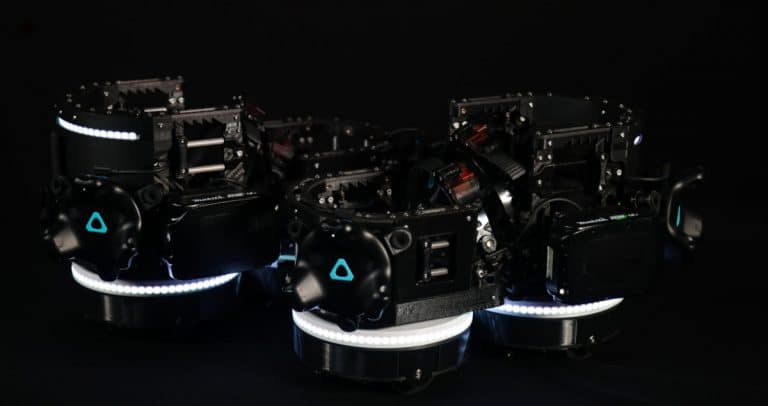Robotic VR boots let you walk without moving forward

Virtual reality (VR) is sprinting forward when it comes to its technological advancements, however, public adoption rates aren’t exactly resulting as developers would hope. This isn’t stopping progress though, as devices are improving in a multitude of ways while also getting cheaper, which in turn will make the products far more accessible to their consumer market.
At the moment, VR is battling with how to allow humans to safely move around while using headgear and playing games, but one company has come up with an interesting solution: VR boots. So, what are these and how exactly will they work?
Why would we need VR boots?
Moving around in VR games has proved to be quite tricky, as the sensation of traveling forward visually as we manoeuvre through a digital realm while our bodies remain stationary can cause motion sickness. Then, there’s the danger of crashing into your surroundings if you move in real life.
Most games, like Half-life: Alyx for example, use a teleport illusionary system where players can instantly jump from one spot to another, which obviously cannot happen in real life—and it’s bound to be disorientating to say the least. The Pittsburgh-based company Etko VR has made the first attempt at combating this problem.
What is the Etko VR boot?
Being the first to attempt this particular solution, all eyes are on Etko’s first product, the Etko One, which is a pair of robotic boots that the company claims are capable of keeping you in one spot while you physically walk forwards, without simulation or strapping into another piece of equipment. Just you and the boots walking ‘normally’.
The shoes are made of a carbon-fiber design that Ekto says is lightweight even though they look like industrial machinery. They use HTC’s Vive Tracker pucks, which provides a wireless connection between your attached tools (the boots) and your VR system, to track your movement in the game.
How does the Etko VR boot work?
When you walk forwards, the boot glides backward on wheels while keeping you in the same spot. Basically, you’ll look like a pro moonwalker. Rest assured, the boots have a set of brakes that automatically hold you up-right if your heart fluttered a bit at the sound of wheels.
As weirdly wonderful as this sounds, there are some drawbacks. First of all, the user has to move very slowly, which is not something your instincts are bound to do when there’s a monster chasing after you and your virtual life is on the line. Also, you’re not only kitted out with the boots, you’re going to be holding two controls as well as simultaneously wearing a giant helmet.
As intriguing as the design is, it obviously has leaps and bounds to perfect before it becomes a commercial product, hence why the Ekto VR boot is staying put within the enterprise markets for now. That being said, it does show a promising avenue for the VR locomotive future and gives an idea as to how seamlessly immersive VR could really be in a few years time.




